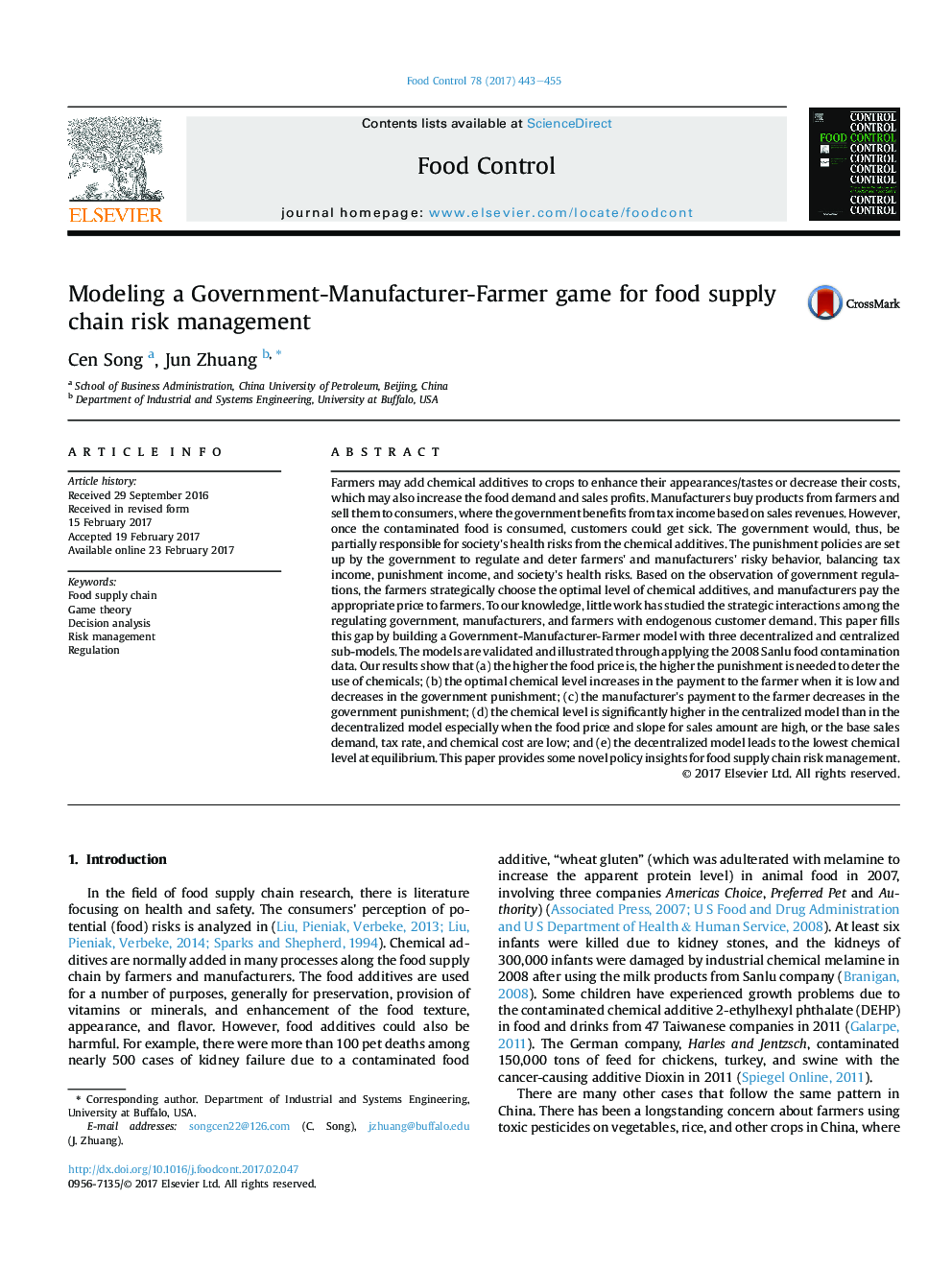| کد مقاله | کد نشریه | سال انتشار | مقاله انگلیسی | نسخه تمام متن |
|---|---|---|---|---|
| 5767535 | 1628386 | 2017 | 13 صفحه PDF | دانلود رایگان |
- We develop a novel game-theoretical model to study optimal risk management policy.
- This paper was motivated by recent food contamination accidents.
- We model the interactions between the government, manufacturers and farmers.
- Real data is used to estimate the model parameters and validate the model results.
- The model would help government make decisions on regulating food supply chain.
Farmers may add chemical additives to crops to enhance their appearances/tastes or decrease their costs, which may also increase the food demand and sales profits. Manufacturers buy products from farmers and sell them to consumers, where the government benefits from tax income based on sales revenues. However, once the contaminated food is consumed, customers could get sick. The government would, thus, be partially responsible for society's health risks from the chemical additives. The punishment policies are set up by the government to regulate and deter farmers' and manufacturers' risky behavior, balancing tax income, punishment income, and society's health risks. Based on the observation of government regulations, the farmers strategically choose the optimal level of chemical additives, and manufacturers pay the appropriate price to farmers. To our knowledge, little work has studied the strategic interactions among the regulating government, manufacturers, and farmers with endogenous customer demand. This paper fills this gap by building a Government-Manufacturer-Farmer model with three decentralized and centralized sub-models. The models are validated and illustrated through applying the 2008 Sanlu food contamination data. Our results show that (a) the higher the food price is, the higher the punishment is needed to deter the use of chemicals; (b) the optimal chemical level increases in the payment to the farmer when it is low and decreases in the government punishment; (c) the manufacturer's payment to the farmer decreases in the government punishment; (d) the chemical level is significantly higher in the centralized model than in the decentralized model especially when the food price and slope for sales amount are high, or the base sales demand, tax rate, and chemical cost are low; and (e) the decentralized model leads to the lowest chemical level at equilibrium. This paper provides some novel policy insights for food supply chain risk management.
Journal: Food Control - Volume 78, August 2017, Pages 443-455
